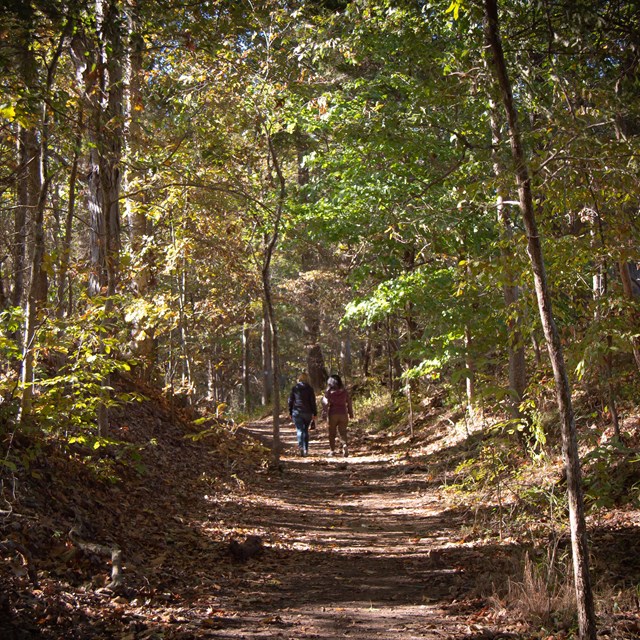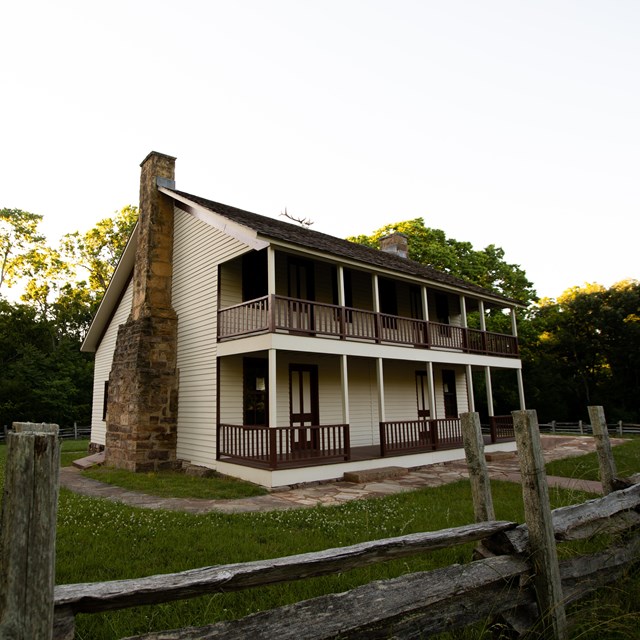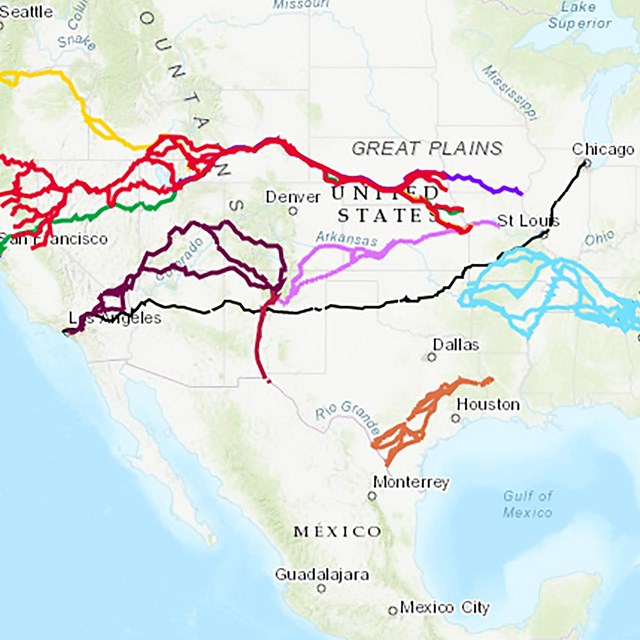Last updated: October 7, 2023
Article
Trail of Tears at Pea Ridge National Military Park
Records show that 10,370 Cherokee traveled on the Trail of Tears through what became Pea Ridge National Military Park. The B.B. Cannon contingent, consisting of Cherokee who had agreed to be removed with government assistance in 1837, was one of the few contingents that kept a journal of their experiences which includes rare yet limited information about enslaved people moving west with the Cherokee in 1837. The following year, the journal of a preacher traveling with the Cherokee here expresses the challenges of finishing the journey and apprehension about arrival in their new land in 1838 and 1839.
Twenty-five years before the Civil War, William Ruddick’s (Reddick’s) farm was situated on one of the main road between St. Louis and Fort Smith. During the late 1830s, when the Cherokee came through on the Trail of Tears, it functioned as a supply station and issued receipts that show the purchase price and the location here as Sugar Creek, Benton County, Arkansas. He was also paid for overnight accommodations and meals for some of individuals traveling with the Cherokee detachments. The Cherokee camped on the ground in the surround area, 1,000 men, women, and children resting with cooking fires for their supper. This was just another night on the trail, getting very close to their destination, but still not that different from the nights they’d spent along the hundreds of miles of their journey.
When B.B. Cannon’s 1837 treaty party detachment was nearing the end of their near 900-mile journey to Indian Territory (today’s Oklahoma), apprehension and sadness weighed heavily for this difficult journey. While camped at William Reddick’s field at Pea Ridge, B.B. Cannon reported on Dec. 23rd, 1837: Buried Rainfrogs daughter (Lucy Redstick’s child). Marched 8 o’c. A. M. halted at Reddix, encamped and issued corn & fodder & beef. 16 miles. This feeling carried into 1838 and was felt by the eleven detachments to come through Pea Ridge.
The detachments that departed homeland in 1838 were removed under the direction of Cherokee Chief John Ross and each of the 11 detachments was assigned a conductor. Records are sparse about these groups, but the first contingent reached Reddick’s supply station about December 28, 1838. The last contingent passed through Pea Ridge about March 20, 1839. In two years, an estimated 10,370 Cherokee traveled on the Trail of Tears through what became Pea Ridge National Military Park.
Reverend Daniel S. Butrick, of the Richard Taylor contingent, records in a journal that “Arkansas [was] the land of spiritual darkness.” His statement may reflect concern Christian Cherokee had about Northwest Arkansas and their new home in Indian Territory. Butrick and other missionaries had begun mission schools among the Cherokee in the east and removed with the Cherokee to their new home.
The Taylor contingent, according to Buttrick’s journal, remained at Reddick’s field for two days as a camping place due to poor weather.
The Cherokee owned slaves and many took them west to Indian Territory. While little is known about the enslaved persons who came with the Cherokee, the 1835 census reveals a population of slaves among the Cherokee living in the east. Of the eleven detachments that passed through Pea Ridge, nine of their leaders were listed as slave owners on that Cherokee census. There are few records of muster rolls of members of each contingent, so it is not possible to fully determine the number of slaves traveling.
Yet records reveal that slaves did remove with the Cherokee. An example can be found in Cannon’s journal which takes note of people of African descent with his group while they are in Missouri.
Dec 4, 1837 - Left Mr. Wells to bury a waggoner (a black boy) who died this morning.
Dec 5, 1837- Left two waggoners (black boys) at Mr. Davis sick.
The sickness that was affecting the waggoners was also experienced among the Cherokee. Dr. G. S. Townsend, physician with the contingent, said the sickness was caused by the stagnant drinking water and the fruit they had eaten (mostly wild grapes) along the route. Foraging for additional food supplemented the limited government rations of cornmeal or dried corn and bacon or pork or beef. At times the Cherokee men were permitted to kill hunt but overall, the diet was very monotonous.
Plan Your Visit
Pea Ridge National Military Park, the Trail of Tears
Trail of Tears: Northwest Arkansas Itinerary
This site is on the Old Wire Road Itinerary which helps the public explore Trail of Tears sites in northwest Arkansas. Each site features one aspect or story about the Cherokee experience traveling the Trail of Tears in this area as they approach the end of their journey and arrive in Indian Territory (today’s Oklahoma).




